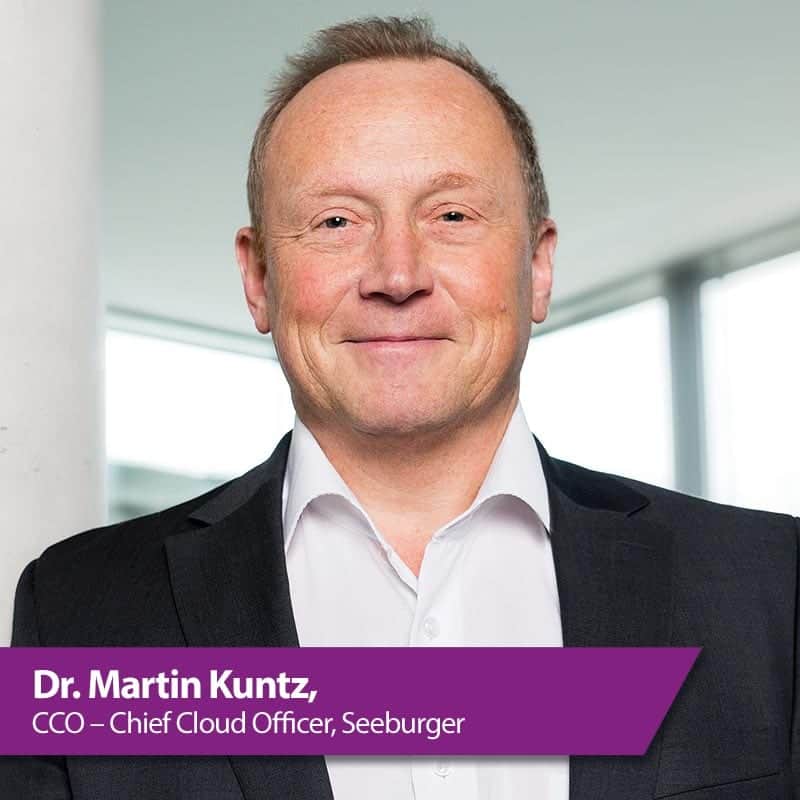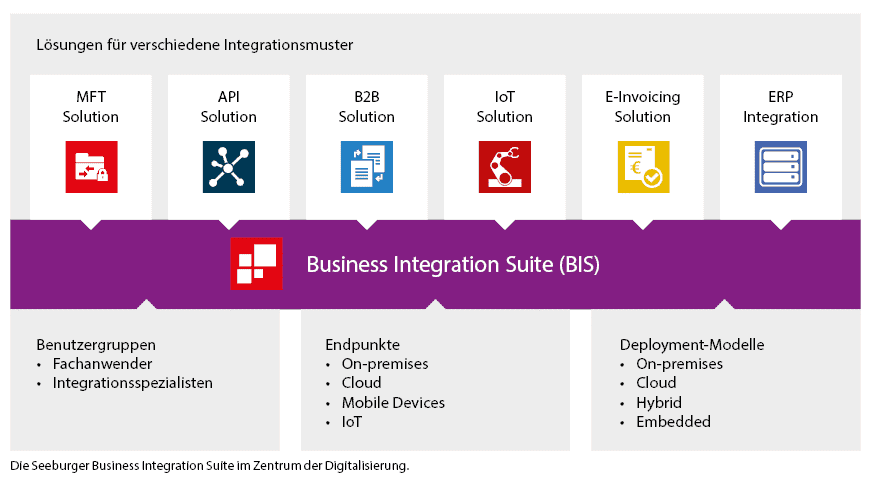Business Integration Suite: Ahead of the times
![[shutterstock.com: 1234673626, Dmitriy Rybin]](https://e3mag.com/wp-content/uploads/2020/03/shutterstock-1234673626.jpg)

About five years ago, the "Hybrid Integration Platform" (HIP) approach developed by Gartner first made the rounds and has since come to dominate the integration scene.
As a kind of reference model, the Gartner approach offers both providers and users of integration solutions orientation in the confusing jungle of integration requirements.
According to the well-known analysis and market research company, 65 percent of all large companies will have set up a HIP-compliant integration platform in about two years.
In this context, the topic of integration is closely intertwined with digitization or digital transformation projects to optimize business processes with the aim of accelerating business or even introducing completely new business models.
You could even put it this way: Without an all-encompassing technical and semantic integration of systems, data and processes, true, networked digitization will be difficult to achieve.
Framework and platform
So what exactly does the word "hybrid" stand for in the context of the hybrid integration platform? Basically, it's about covering the broadest possible spectrum of integration requirements, some of which are completely different in nature:
Specifically, this includes real-time cloud and API integration, business-to-business integration (B2B/EDI), IoT or Industry 4.0 integration, international e-invoicing, ERP and enterprise application integration, and secure managed file transfer (MFT).
These integration patterns are used for SCM topics such as product data management, e-procurement, the networking of production systems, e-commerce, warehouse and logistics processes, and generally for overarching topics such as HCM or CRM.
In the finance and banking sector, too, lifecycle API management is being used to optimize digital customer services, in addition to classic integration technologies.
According to Gartner, covering the so-called integration patterns listed above is the most important building block of hybrid integration platforms.
Regardless of this, however, Gartner rightly demands further building blocks from a HIP, which must also be taken into account and which make the topic of integration appear quite complex. This is because Gartner defines the term hybrid integration platform very comprehensively.
Virtually all integration-oriented applications, technologies, processes and expertise that a given company needs or will foreseeably need fall under this term.

On the one hand, Gartner refers to HIP as a "framework", on the other hand as an "integration platform". In a nutshell, "framework" and "integration platform" can be classified as follows: Framework means, so to speak, everything - and really everything - that is related to integration.
A hybrid integration platform, on the other hand, is a type of middleware system in the form of a complete solution that provides elements or functions for practical process, technical and operational integration implementation.
Gartner demands four concrete building blocks from a HIP: In addition to the integration patterns already mentioned, these are user groups, endpoints and deployment models.
User groups include, for example, business users and integration specialists who are involved with or work with a HIP-compliant integration platform in a company.
Endpoints are on-premises and cloud systems, mobile devices and IoT technologies. Finally, the integration platform or elements of it can be deployed on-premises, in the cloud, hybrid or embedded (in the device or system).
Integration platform as middleware
Seeburger is a provider of an integration platform or middleware that consistently follows the approach coined by Gartner. A general overview with function blocks is shown in the figure "The Seeburger Business Integration Suite at the center of digitization".
The scope of the solution is tailored to the target groups of midmarket and large enterprises. Based on the Gartner approach, the term HIP is also relative and can have different meanings in relation to the scope of the solution. It "grows" and "shrinks" with the individual company's need for integration services.
Medium-sized companies in particular need ready-made solution modules for the various integration modules in order to be able to meet their needs quickly and efficiently.
Seeburger, for example, offers this with its BIS platform (Business Integration Suite). In large corporations, a complementary need usually arises in the area of organization and governance, and there HIP platforms - often historically grown - can also arise on the basis of several products.
With the Business Integration Suite (BIS) as a HIP-compliant platform, Seeburger already provides a complete package based on a "One Platform Strategy" that takes into account practically all important integration requirements from a modern business and technology perspective in a uniform system. It should be noted that BIS in its current form was developed long before the HIP approach and, if you will, before the HIP era.
One Platform Strategy
User companies demonstrably benefit from the approach - "One Platform" instead of "Patchwork Solutions" - in several respects: On the one hand, synergy effects can be achieved, since handling and usage options only have to be learned and further developed on the basis of one system.
On the other hand, the modular structure of the platform offers the possibility of scaling or expanding the system as needed, whether for business/functional or technical reasons.
Furthermore, the "One Platform" approach protects investments made. And on top of that, the use of flexible forms of operation is supported; both on-premises and cloud use or even hybrid operating models that are currently in vogue.
When we talk about a modular structure, we mean the following, comparable in some respects to SAP Business Suite or S/4 Hana, where customers have always been able to selectively use individual modules for Financials or Logistics, for example, from a range of solutions:
BIS represents a complete package. Nevertheless, the customer can choose according to their particular needs. For example, while one customer uses BIS exclusively for B2B/EDI integration, other customers also use API/EAI integration, perhaps paired with SAP ERP, e-invoicing or IoT integration and managed file transfer.
Predefined templates, preconfigured mappings or API libraries are provided in BIS for numerous use cases, such as SAP integration, B2B/EDI integration or the integration of web services via REST API.
This reduces, for example, the setup of multiple business partner connections via EDI to just a few hours.

Governance and Operations
Governance and operations play an important role in the use of an integration platform in the enterprise environment.
BIS has been taking these management fields into account in a distinctive form for decades - certainly one of the reasons why there are now over 10,000 BIS customers of various company sizes worldwide.
Medium-sized customers with possibly low integration requirements as well as internationally operating corporations with highly complex operational requirements.
Basically, Seeburger positions itself as an integration provider that delivers "everything from a single source". In addition to the successful BIS solution, Seeburger also offers extensive integration consulting services.
Customers are supported with the following questions, for example: How to drive digitization in terms of business acceleration or business optimization?
What needs to be done in terms of integration? How to introduce and effectively use a beneficial API management? How to push an SAP-Non-SAP integration (e.g. Salesforce), perhaps also an SAP-SAP integration?
What needs to be considered in the individual deployment of an integration platform from a technical perspective and against the background of a specific regulatory framework? Or, or, or.
Industry focus
Furthermore, Seeburger focuses on selected industries with the BIS solution. This means that there are also industry-specific versions of the Business Integration Suite with predefined functionality and industry-specific business content. For example, for the automotive industry, for the CPG/retail industry or for the energy industry.
The current BIS version is available as Major Release 6.7 and sees itself in particular as a HIP platform for all integration scenarios, with which new business requirements can also be put into practice, for example in connection with artificial intelligence (AI) and Big Data, blockchain or real-time integration in API and IoT scenarios.





